On 9 May 2023, the Australian Government handed down its Federal Budget, boasting the first budget surplus in 15 years. The theme running through the Budget is the continued easing of cost-of-living and inflationary pressures. As in previous years, the Budget indicates the Government’s increased focus on debt collection and tax compliance. To wrap it all up for business owners and investors, BlueRock’s experts across industry, tax law, private wealth, superannuation, complex tax advisory and the economy have poured over the Budget Papers, delivering the important information you need. Let’s dive in!
What does the Federal Budget mean for Individuals and Families?
STAGE 3 TAX CUTS
Despite pressure to wind back the Stage 3 tax cuts, no changes were announced to the already legislated personal tax cuts beginning 1 July 2024. With the start date of the Stage 3 tax cuts over a year away, the Treasurer chose not to address these cuts in the Budget.
CHANGES TO THE MEDICARE LEVY
The Government will increase the Medicare levy low income thresholds for singles, families, seniors and pensioners.
- The threshold for singles will be increased from $23,365 to $24,276.
- The family threshold will be increased from $39,402 to $40,939.
- For single seniors and pensioners, the threshold will be increased from $36,925 to $38,365.
- The family threshold for seniors and pensioners will be increased from $51,401 to $53,406.
- For each dependent child or student, the family income thresholds will increase by a further $3,760 instead of the previous amount of $3,619.
Eligible lump sum payments in arrears (e.g. compensation for underpaid wages) will be exempt from the Medicare levy for certain taxpayers from 1 July 2024.
What Does the Federal Budget Mean for Businesses?
SMALL BUSINESS $20,000 INSTANT ASSET WRITE-OFF
The temporary full expensing measures will expire from 30 June 2023. Small businesses with an aggregated turnover of less than $10 million will have another chance to invest in business assets as a result of a temporary increase in the instant asset write off threshold to $20,000 from 1 July 2023 until 30 June 2024. This measure will apply on an asset-by-asset basis, allowing businesses to apply the measure to multiple assets. The instant asset write-off threshold is then expected to reduce to $1,000 (being the default) from 1 July 2024 unless extended further.
SMALL TO MEDIUM BUSINESS ADDITIONAL 20% TAX DEDUCTION ENERGY INCENTIVE
Small and medium businesses (aggregated annual turnover of less than $50 million) will be able to deduct an additional 20% of the cost of eligible depreciating assets that support electrification and more efficient energy use. Up to $100,000 of total expenditure will be eligible for the Small Business Energy Incentive , with the maximum bonus deduction being $20,000.
The Small Business Energy Incentive will cover depreciable assets and upgrades, including energy-efficient appliances, electrification aids like heat pumps, and demand management assets such as batteries. Eligibility criteria will be confirmed after consulting stakeholders.
Eligible assets will need to be first used or installed ready for use between 1 July 2023 and 30 June 2024. Eligible upgrades will also need to be made in this period. Certain exclusions will apply such as electric vehicles , renewable electricity generation assets, capital works, and assets that are not connected to the electricity grid and use fossil fuels.
SMALL BUSINESS PAYG AND GST INSTALMENTS HALVED
The Government will halve the GDP adjustment factor for PAYG and GST instalments from 12% to 6% for the 2023–24 income year. The GDP adjustment rate will apply to small businesses and individuals who are eligible to use the relevant instalment methods (up to $10 million aggregated annual turnover for GST instalments and $50 million annual aggregate turnover for PAYG instalments).
COMPANY LOSS CARRY-BACK EXPIRING
The Government didn’t announce measures relating to the company loss-carry back . It can therefore be assumed that the company loss carry-back, which is due to expire on 30 June 2023, will not be extended.
SUPERANNUATION GUARANTEE INCREASING PAYMENT FREQUENCY
From 1 July 2026, employers will be required to pay their employees’ superannuation guarantee (SG) entitlements on the same day that they pay salary and wages. Currently, employers are only required to pay their employees’ SG on a quarterly basis. By increasing the payment frequency of superannuation to align with the payment of salary and wages, this measure will ensure employees have greater visibility over whether their entitlements have been paid, and better enable the ATO to recover unpaid superannuation.
What Does the Federal Budget Mean for Industry?
In this section we cover industry-specific Budget measures and some important updates to Government grants and incentives .
PROPERTY AND CONSTRUCTION INDUSTRY
For eligible new build-to-rent projects where construction commences after 7:30 PM (AEST) on 9 May 2023 (Budget night), the Government will:
- Increase the capital works tax deduction to 4% per year; and
- reduce the final withholding tax rate from managed investment trust (MIT) investments from 30% to 15% (will apply from 1 July 2024).
This measure will apply to build-to-rent projects consisting of 50 or more dwellings made available for rent to the general public. The dwellings must be retained under single ownership for at least 10 years before being able to be sold and landlords must offer a lease term of at least 3 years for each dwelling. Consultation will be undertaken on implementation details, including any minimum proportion of dwellings being offered as affordable tenancies and the length of time dwellings must be retained under single ownership.
In what could be another boost for the property and construction industry , the Government will also introduce a number of housing measures to increase support for social and affordable housing across the country and improve access for first home buyers.
AUSTRADE AND EXPORT MARKET DEVELOPMENT GRANTS – REPRIORITISATION
The Government will reduce funding for the Export Market Development Grants program by $61.0 million over four years starting from 2023-24. It's important to note that the measure will not affect funding already committed or applications currently being assessed. The money the government saves from this measure will be allocated to support the Government's policy priorities in the Foreign Affairs and Trade portfolio.
SMES AND STARTUPS INDUSTRY GROWTH PROGRAM
The Government plans to allocate $392.4 million over four years starting from 2023-24, with an ongoing annual budget of $68.2 million, to establish the Industry Growth Program. The aim of the program is to provide support to Australian SMEs and startups in their efforts to commercialise their innovative ideas and expand their operations.
The support will be targeted towards businesses operating in the priority areas of the National Reconstruction Fund:
- renewables and low emissions technologies
- medical science
- transport
- value-add in the agriculture, forestry and fisheries sectors
- value-add in resources
- defence capability
- enabling capabilities.
To fund this program, the Government has decided to repurpose and expand the funding that was previously designated to support SMEs under the Entrepreneurs’ Programme.
CRITICAL TECHNOLOGIES INDUSTRIES
The Government has announced a funding package of $116 million over 5 years to foster the development of critical technologies in Australia. The objective is to stimulate economic growth, promote technology industries and create new job opportunities.
This funding will include support for small and medium-sized enterprises in their efforts to adopt AI technologies that can enhance their business processes and help them compete more effectively in the global marketplace.
What Does the Federal Budget Mean for Superannuation Investments?
$3M superannuation cap
- The Government will reduce the tax concessions available to individuals with a total superannuation balance exceeding $3 million from 1 July 2025.
- Individuals with a total superannuation balance of less than $3 million will not be affected.
- This reform is intended to ensure generous superannuation concessions are better targeted and sustainable. It will bring the headline tax rate to 30%, up from 15%, for earnings corresponding to the proportion of an individual’s total superannuation balance that is greater than $3 million. This rate remains lower than the top marginal tax rate of 45%. Earnings relating to assets below the $3 million threshold will continue to be taxed at 15% (or 0% if held in a retirement pension account).
- Interests in defined benefit schemes will be appropriately valued and will have earnings taxed under this measure in a similar way to other interests. This will ensure commensurate treatment.
- The additional tax on earnings imposed by this measure will impact around 80,000 individuals in 2025–26, or approximately 0.5% of individuals with a superannuation account. It won’t place a limit on the amount of money an individual can hold in superannuation and the current contributions rules continue to apply.
- This measure is consistent with the Government’s proposed objective of superannuation, to deliver income for a dignified retirement in an equitable and sustainable way.
FREEZE ON MINIMUM PENSION DRAWDOWNS WILL END 1 JULY 2023
The minimum pension 50% reduction won’t continue and will revert to the full rate from 1 July 2023 for 2024 financial year.

What Does the Federal Budget Mean for Tax Compliance and Integrity Measures?
The Budget includes several measures aimed at beefing up the ATO’s tax compliance and integrity enforcement capabilities. These include:
- Payment of tax and superannuation liabilities: Additional funding will be provided to the ATO to engage with taxpayers who have high value and aged debts.
- Lodgment penalty amnesty: Small businesses with a turnover of less than $10 million will be able to participate in a penalty amnesty program that will remit failure-to-lodge penalties for outstanding tax statements.
- Small business reducing tax compliance administrative burden: Funding will be provided to the ATO to lower the tax-related administrative burden for small businesses. The measure includes establishing five new tax clinics and permitting small businesses to authorise their tax agent to lodge multiple Single Touch Payroll forms on their behalf.
- Broadening the general anti-avoidance rule: The scope of the general anti-avoidance rule for income tax will be expanded to include schemes that reduce tax paid in Australia by accessing a lower withholding tax rate on income paid to foreign residents.
- Extending and merging the Serious Financial Crime Taskforce and Serious Organised Crime program: The SFCT and SOC program will merge as a single taskforce from 1 July 2023, with funding extended over 4 years.
- Extending the Personal Income Tax Compliance Program: The Personal Income Tax Compliance Program will be extended for two years from 1 July 2025 and expanded in scope from 1 July 2023.
- GST Compliance: A range of activities will be continued to ensure businesses meet their GST obligations and help the ATO develop more sophisticated analytical tools to combat emerging risks to the GST system.
What does the Federal Budget Mean for International Tax?
GLOBAL MINIMUM TAX AND A DOMESTIC MINIMUM TAX
Australia will implement the OECD/G20 Two Pillar Solution to tackle tax challenges arising from digitalisation of the economy, which includes a 15% global minimum tax and a 15% domestic minimum tax for large multinational enterprises. These minimum tax rules will apply to companies with annual global revenue of at least $1.2 billion and are intended to prevent a "race to the bottom" on corporate tax rates and ensure a minimum level of tax is paid by large multinational corporations in each jurisdiction where they operate. The OECD Global Anti Base Erosion Model Rules will serve as the basis for both the global minimum tax and domestic minimum tax. The Income Inclusion Rule and the Undertaxed Profits Rule will be implemented for income years starting on or after 1 January 2024 and 1 January 2025, respectively.
PACIFIC AUSTRALIA LABOUR MOBILITY
The PALM scheme will be expanded and improved over 4 years with funding from the Government. It allows Australian businesses to hire workers from 9 Pacific islands and Timor-Leste when there are labour shortages. The expansion will continue to meet unskilled, low-skilled, and semi-skilled labour shortages, especially in regional Australia, and is expected to increase receipts by $300 million over 4 years from 2023-24.
Get in Touch to Discuss the Impacts of the Budget on Your Business and Family
Our multidisciplinary team of advisors can help you navigate every twist and turn on your business and wealth adventures. Contact us today or submit the form below to get started.



